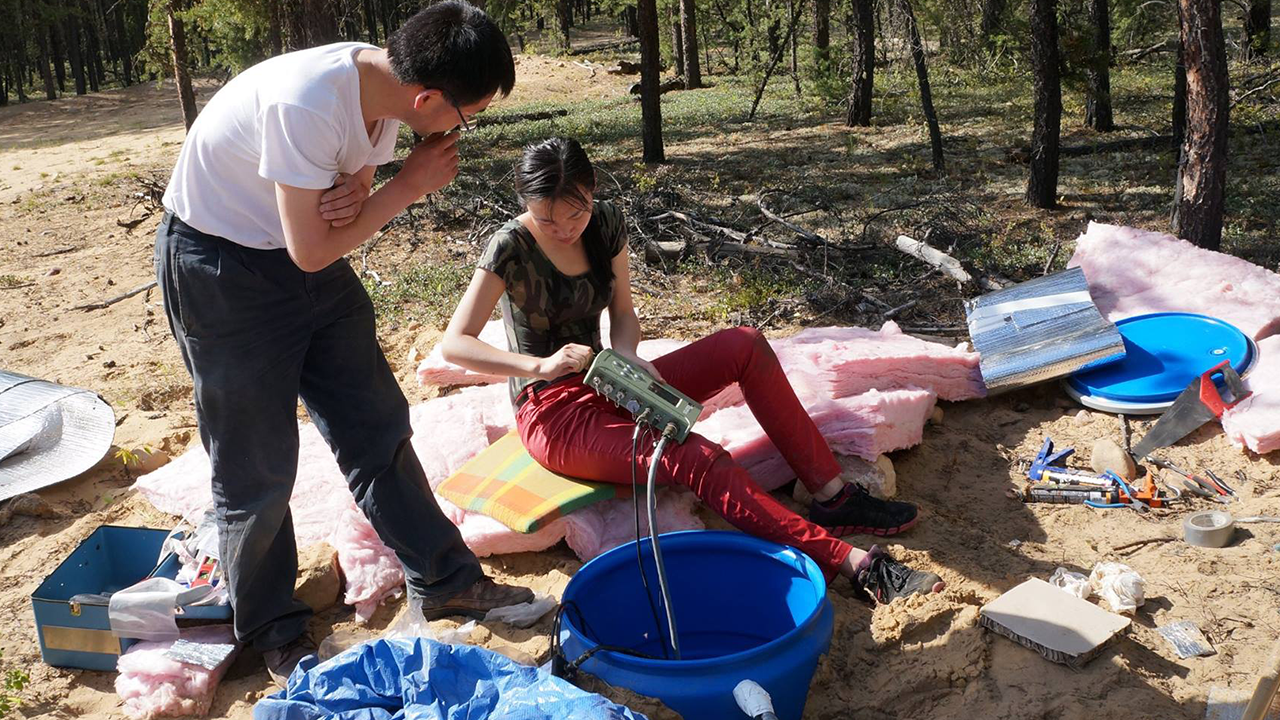
Associate professor Jeff Gu and graduate student Ruijia Wang work on a seismic station in the field.
In January 2016, the community of Fox Creek experienced a record-setting earthquake. The largest and most powerful activity recorded in Alberta in the last decade, the event was rated at 4.8 on the Richter magnitude scale and was accompanied by hundreds of smaller quakes.
Research from the University of Alberta's Department of Physics shows that the Fox Creek earthquake, along with many others in the region, was caused by hydraulic fracturing.
These induced earthquakes are caused by industrial activities involving fluid injection or extraction, such as hydraulic fracturing, and are becoming larger and more frequent worldwide.
Induced seismicity
"As we understand more about how and why hydraulic fracturing causes induced earthquakes, we are able to assist governing agencies in developing more informed policies and regulations." -Ruijia Wang
"Since 2015, Alberta has experienced a number of earthquakes with magnitudes close to 4.0," explains Ruijia Wang, PhD candidate. "This research has improved our understanding of the nature and characteristics of these induced earthquakes-which is critical for future hazard assessment and monitoring."
In a study conducted in conjunction with the Alberta Geological Survey, Wang and colleagues used regional seismic recordings to analyze the source mechanisms of earthquakes induced by hydraulic fracturing in Alberta. The geology of the Western Canadian Sedimentary Basin, an area of nearly 1.5 million square kilometres in Western Canada, supports the potential fault geometry, thereby setting the stage for future induced earthquakes in the region.
"Our research on the January 2016 earthquake cluster offers critical insights on the nature of induced earthquakes in the Fox Creek region and other parts of the Western Canadian Sedimentary Basin," explains Wang.
Wang notes that, whereas the majority of induced earthquakes in Canada are associated with hydraulic fracturing, induced earthquakes in the United States are predominantly caused by wastewater disposal. This notable difference is one of the many lingering questions that invite regionally based, case-by-case studies of induced seismicity in Canada.
Potential for policy
"As we understand more about how and why hydraulic fracturing causes induced earthquakes, we are able to develop to assist governing agencies in developing more informed policies and regulations," Wang says.
Wang received the Outstanding Student Paper award for her presentation at the 2016 American Geophysical Union meeting for her work on induced earthquakes in Alberta. This research was conducted under the supervision of associate professor Jeffery Gu as part of Wang's PhD studies.